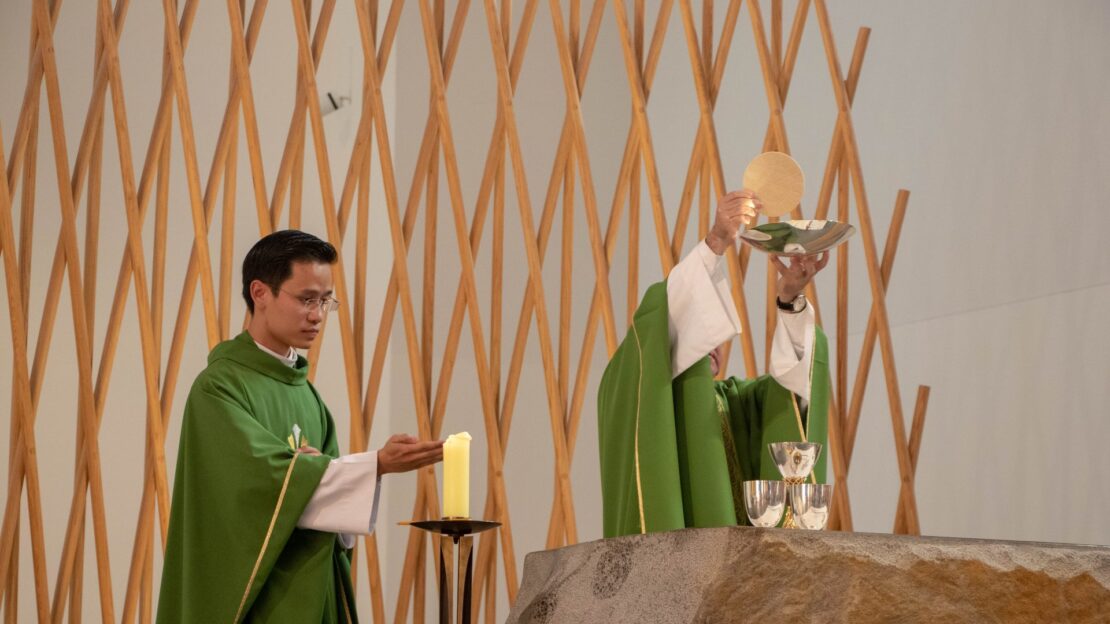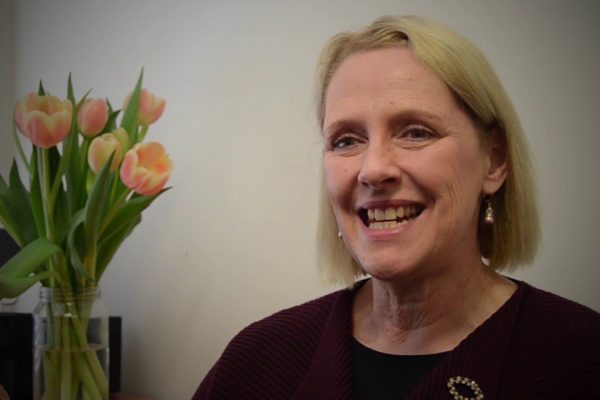The Eucharistic Prayer corresponds to the words of Jesus in the gospel accounts of the Last Supper: Jesus “took bread, blessed it……” over the bread, and “he took the cup, gave you thanks and praise….”over the cup of wine. So it is a prayer of thanksgiving and praise. It has its ultimate origins in the Jewish prayers of praise and thanks which were part of Jewish ritual meals. We can see this in the initial dialogue between the priest and the people: the priest invites the people with the words “Let us give thanks to the Lord our God” and the people reply “It is right and fitting to do so”.
The prayer concludes as a prayer of intercession as we can see in its final verses where we pray for the world, the Church and its leaders and that we all might come to the future glory given us in Christ’s death and resurrection. We pray that God may continue to bring about in us what he brought about in Christ our risen Lord.
In the middle of the prayer we have the account of Jesus’ words and actions at the Last Supper in which he hands himself over to death and into the hands of the Father trusting the Father to bring about his purpose even through death.
Before and after the account of the Last Supper, the prayer calls on the Holy Spirit to bring about again among us the gift which Christ makes of himself to us and for us. A gift which we will receive during Communion. The Eucharistic Prayer is our real communion prayer as it tells us what we are receiving at communion.
Notice that the whole prayer is prayed by the priest not in his own name, but in the name of the whole congregation. It is always with the pronoun ‘we’ that the priest prays. It is our prayer; and our interventions (the initial dialogue, the Holy Holy, the memorial acclamation and the final Amen) are not interruptions to the prayer but are integral to its whole flow. They are the moments when we explicitly make the prayer our own. The final Amen is especially important and is the most ancient acclamation. It is called the ‘Great Amen’. St John Chrysostom called it the people’s signature to the prayer. And the initial dialogue between the priest and the people has been called the people’s invitation to the priest to speak in their name.
By Fr Frank O’Loughlin




Comments
Kerry Bourke
Thanks for this explanation of the Eucharistic Prayer, Father Frank. Your explanation gives much more personal meaning of it to me.
Add Comment